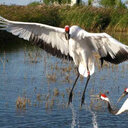Neuroprotection by baicalein in ischemic brain injury involves PTEN/AKT pathway.
Từ khóa
trừu tượng
Recently more evidences support baicalein (Bai) is neuroprotective in models of ischemic stroke. This study was conducted to determine the molecular mechanisms involved in this effect. Either permanent or transient (2 h) middle cerebral artery occlusion (MCAO) was induced in rats in this study. Permanent MCAO led to larger infarct volumes in contrast to transient MCAO. Only in transient MCAO, Bai administration significantly reduced infarct size. Baicalein also markedly reduced apoptosis in the penumbra of transient MCAO rats. Additionally, oxygen and glucose deprivation (OGD) was used to mimic ischemic insult in primary cultured cortical neurons. A rapid increase in the intracellular reactive oxygen species level and nitrotyrosine formation induced by OGD was counteracted by Bai, which is parallel with attenuated cell injury. The reduction of phosphorylation Akt and glycogen synthase kinase-3beta (GSK3beta) induced by OGD was restored by Bai, which was associated with preserved levels of phosphorylation of PTEN, the phophatase that negatively regulates Akt. As a consequence, Bcl-2/Bcl-xL-associated death protein phosphorylation was increased and the protein level of Bcl-2 in motochondria was maintained, which subsequently antagonize cytochrome c released in cytosol. LY294002 blocked the increase in phospho-AKT evoked by Bai and abolished the associated protective effect. Together, these findings provide evidence that Bai protects neurons against ischemia injury and this neuroprotective effect involves PI3K/Akt and PTEN pathway.


